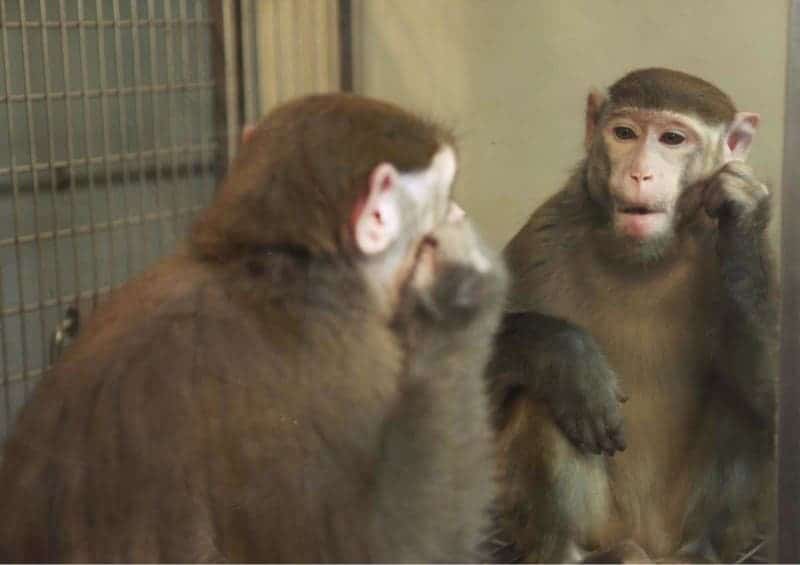Only humans and great apes can recognize themselves when looking in a mirror, but new findings suggest that it’s possible for rhesus monkeys to realize they’re looking at themselves if trained properly. The findings bear important implications for humans as well, since they suggest patients with impairment of self-recognition can have their condition remedied with training.
To be self aware

You might not enjoy looking yourself in the mirror, but believe it or not your ruthless self inspection of pimples, funny moles and crooked teeth is a display of powerful cognitive effort and mental gymnastics that not too many species can boast. Since the 1970s psychologists have used mirrors to search for signs of self-awareness in both humans and animals. Along the way, they came to believe that humans were almost universally able to pass a mirror-based self-recognition test by 24 months of age. As far as non-human animals go, chimps, gorillas and orangutans have been also found to pass the mirror test, although not all tried specimens pass it and some lost the ability as they aged.
While members of most species of great apes have shown compelling evidence that they recognize themselves, no monkey has done so. In early tests, researchers would put monkeys in front of mirrors of various shapes and sizes starting from early age, yet while the monkeys could learn to use the mirrors as tools for observing other objects they failed to show any signs of self-recognition. Such signs include exploration of otherwise unknown and invisible marks usually applied to the individual’s head. In contrast, great apes display focus and concentration as they use the reflection to pick their teeth, explore their ears, or investigate their genitals. At best, only fleeting/incidental touches near the mark have been reported in a few monkeys during mark tests. No monkey has ever been shown to use its reflection to carefully inspect a directly non-visible body part such as inside its mouth or behind an ear, in spite of repeated attempts to make things easier for monkeys.
Training a monkey to look in the mirror
Neng Gong of the Chinese Academy of Sciences and colleagues weren’t convinced, so they took extra measures. Rhesus monkeys were sat in front of a mirror and had a pesky laser light shined on their faces. They rewarded the monkeys each time they touched the affected area, and after days of training, the researchers switched to a non-irritating red laser light. Two to five weeks in, the monkeys had learned to touch faces areas market by the laser spot they couldn’t feel in front of the mirror. When the mirror was replaced by video images, the monkeys were also apt at noticing the virtual face marks.
Five out of the seven trained monkeys also showed signs of typical self-direct behavior induced by mirrors, like touching the marks on the face or ear then looking and/or smelling at their findings, as if they were communicating to their selves “what’s this on my face?”. They also used the mirrors unprompted by researchers to inspect other body parts that weren’t marked. In effect, the monkeys had passed the mirror test.
“Our findings suggest that the monkey brain has the basic ‘hardware’ [for mirror self-recognition], but they need appropriate training to acquire the ‘software’ to achieve self-recognition,” says Gong said.
The findings suggest that there’s hope for patients inflicted with mental retardation, autism, schizophrenia, or Alzheimer’s disease and who are unable to recognize themselves in the mirror anymore.
“Although the impairment of self-recognition in patients implies the existence of cognitive/neurological deficits in self-processing brain mechanisms, our finding raised the possibility that such deficits might be remedied via training,” the authors write in Current Biology. “Even partial restoration of self-recognition ability could be desirable.”


